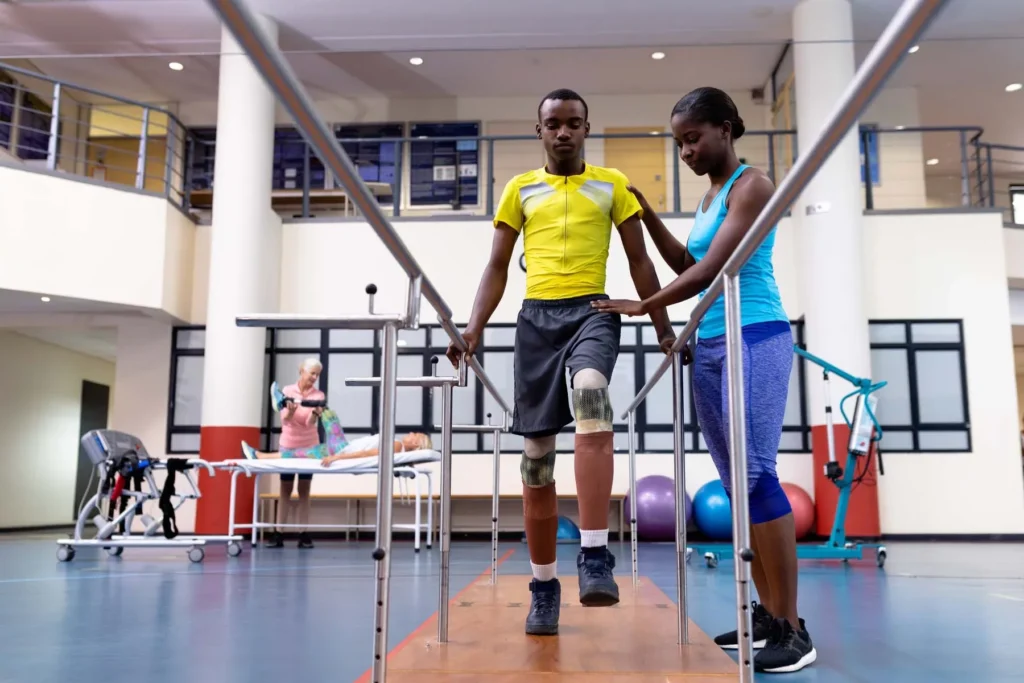A little pain turned into scans, reports… and suddenly, you’re being advised surgery? If this sounds familiar, you’re not alone. Millions of people worldwide face this exact moment of uncertainty, wondering if going under the knife is their only option.
Here’s what might surprise you: many conditions that seem to “require” surgery can actually be treated effectively with the right physiotherapy approach. Before you schedule that operation, let’s explore how conservative treatment could be your path to recovery.
The Surgery-First Mentality: Why It’s Not Always Right
Modern medicine has made surgical procedures safer and more precise than ever. However, this advancement has sometimes created a “surgery-first” mentality where invasive procedures are suggested before exploring less aggressive options.
Consider this: your body has an incredible capacity to heal itself when given the right conditions and guidance. Surgery, while sometimes necessary, should often be considered after conservative treatments have been thoroughly explored.
Common Conditions That May Not Need Surgery
Knee Pain and Meniscus Tears
The Traditional Approach: MRI shows a meniscus tear → immediate recommendation for arthroscopic surgery.
The Reality: Many meniscus tears, especially degenerative ones, can heal with proper physiotherapy. Studies show that patients who undergo structured physical therapy often experience similar pain relief and functional improvement compared to those who have surgery.
Herniated Disc (Slip Disc)
The Traditional Approach: Severe back pain + herniated disc on MRI = surgery recommendation.
The Reality: Up to 90% of herniated discs can resolve naturally with conservative treatment. Your body can actually reabsorb the herniated material over time.
What Works:
- Specific spinal decompression exercises
- Core strengthening
- Postural correction
- Pain management techniques
Frozen Shoulder (Adhesive Capsulitis)
The Traditional Approach: Persistent shoulder stiffness and pain → manipulation under anesthesia or arthroscopic surgery.
The Reality: Frozen shoulder often resolves naturally over 12-24 months, but physiotherapy can significantly speed up recovery and improve outcomes.
The Physiotherapy Advantage:
- Gentle mobilization techniques
- Progressive stretching programs
- Heat therapy and manual techniques
- Gradual return to functional activities
Sciatica
The Traditional Approach: Persistent leg pain with nerve involvement → spinal surgery consideration.
The Reality: Most sciatica cases respond well to conservative treatment, with surgery needed in less than 10% of cases.
Effective Treatments:
- Nerve mobilization exercises
- Targeted stretching for piriformis and hip flexors
- Core stabilization
- Postural education
The Power of Physiotherapy: Why It Works

Addresses Root Causes
Unlike surgery, which often treats symptoms, physiotherapy identifies and addresses the underlying movement patterns and muscle imbalances that contribute to your condition.
Promotes Natural Healing
Your body has remarkable healing capabilities. Physiotherapy creates the optimal environment for natural recovery through improved blood flow, reduced inflammation, and enhanced tissue repair.
Builds Long-Term Resilience
Surgery fixes a problem at one point in time. Physiotherapy gives you tools and strength to prevent future issues.
Minimal Risk, Maximum Benefit
Unlike surgery, physiotherapy has virtually no side effects or complications. The worst that can happen is no improvement – but even then, you haven’t lost anything.
Red Flags: When Surgery Might Be Necessary
While physiotherapy is incredibly effective, some situations do require immediate surgical intervention:
Severe neurological symptoms (loss of bowel/bladder control, significant muscle weakness)
Progressive nerve damage that’s worsening despite conservative treatment
Structural instability that poses immediate risk
Failed conservative treatment after 6-12 weeks of dedicated therapy
Your Action Plan: Making the Right Choice
Step 1: Seek a Second Opinion
If surgery has been recommended, consider consulting a physiotherapist first. Many conditions benefit from a trial of conservative treatment before considering surgery.
Step 2: Commit to the Process
Physiotherapy requires active participation. Unlike surgery, where you’re passive, rehabilitation requires your daily commitment to exercises and lifestyle changes.
Step 3: Find the Right Professional
Not all physiotherapists are created equal. Look for one who:
- Specializes in your specific condition
- Uses evidence-based treatment approaches
- Provides education alongside treatment
- Has experience with pre-surgical rehabilitation
Step 4: Set Realistic Expectations
Recovery through physiotherapy often takes longer than surgery, but the results are typically more sustainable. Expect gradual improvement over weeks to months, not days.
The Bottom Line
Surgery has its place in modern medicine, but it shouldn’t be your first choice for many common musculoskeletal conditions. Your body is designed to heal, and with the right guidance, support, and commitment, you might be surprised by what conservative treatment can achieve.
Remember: surgery is irreversible, but choosing physiotherapy first doesn’t close any doors. You can always opt for surgery later if conservative treatment doesn’t work. However, you can’t “un-do” surgery if you’re not satisfied with the results.





